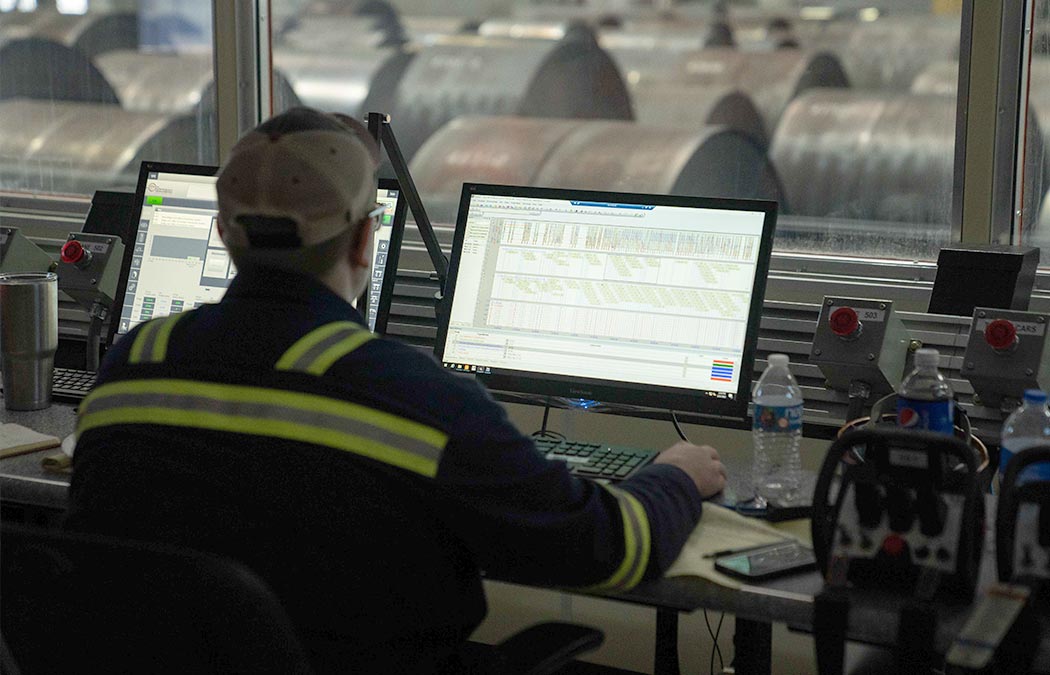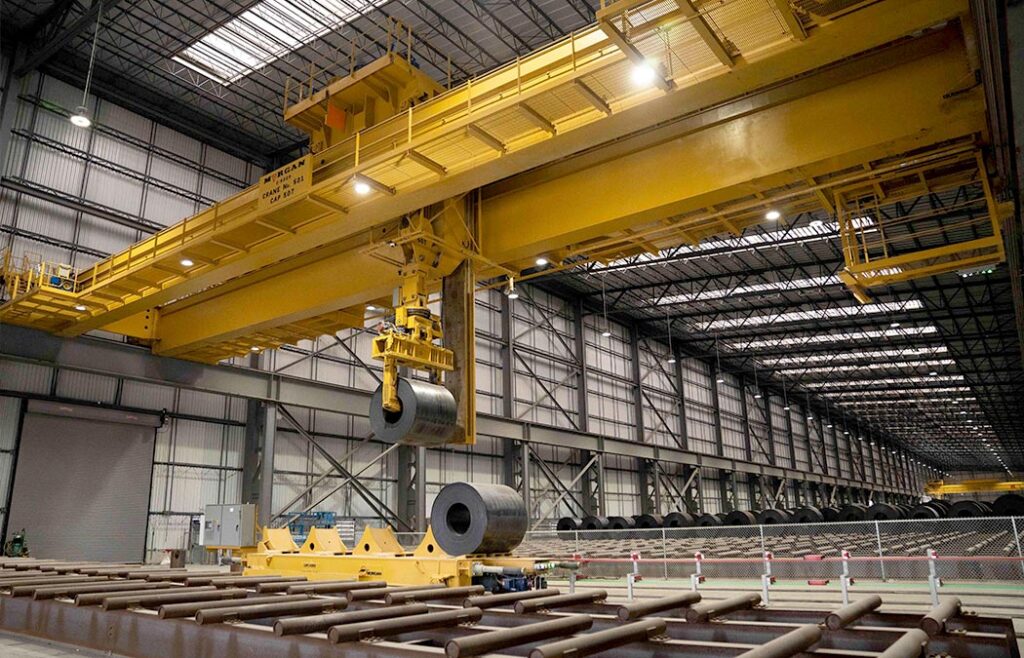The Environmental and Technological Edge of Automated Cranes

/ Blog
Exploring the Future of Crane Automation
Cranes have long been the backbone of industries that require heavy lifting and precise movement of materials, such as construction, shipping, and manufacturing. With the advent of automation, cranes have evolved significantly, offering greater efficiency and environmental benefits. Automation has the potential to revolutionize the way we approach energy use and emissions in industrial operations. Fully automated cranes, in particular, are at the forefront of this transformation.

Environmental Impacts of Fully Automated vs. Semi-Automated Cranes
Because of their improved efficiency, fully automated cranes reduce the environmental impact that a normal crane would have. Through a variety of features, fully automated cranes can help you reduce your environmental footprint, including:
Optimized Energy Use
Fully automated crane systems are designed to operate continuously and efficiently, leading to reduced energy consumption. They often incorporate advanced features such as regenerative braking, which captures and reuses energy during operation. This reduces the overall energy footprint and minimizes waste.
Reduced Emissions
By operating more efficiently, fully automated cranes can significantly reduce emissions compared to semi-automated cranes. The consistency and precision of automated systems ensure that operations are carried out in the most energy-efficient manner, reducing the reliance on fossil fuels and lowering greenhouse gas emissions.
Waste Minimization
The precision and control offered by fully automated cranes help in minimizing material waste. Accurate load handling and placement reduce the chances of spillage, damage, and unnecessary movements, leading to more sustainable operations.
In contrast, semi-automated cranes may not achieve the same level of energy efficiency, especially if they are operated inconsistently or under suboptimal conditions. Human operators may not always optimize energy use, leading to higher emissions and increased waste.
Technological Advancements in Automated Cranes
The technological landscape of crane automation is evolving rapidly, with several innovations enhancing the capabilities of both fully and semi-automated cranes. Here are some of the recent advancements:
- AI-Powered Load Recognition: Artificial intelligence (AI) has made significant advancements into crane automation. AI-powered load recognition systems enable cranes to identify and handle different types of loads with greater accuracy, safety, and efficiency. This reduces the risk of errors and enhances operational safety.
- Real-Time Data Analytics: The integration of real-time data analytics allows for continuous monitoring and optimization of crane operations. Sensors and IoT devices collect data on various parameters, such as load weight, movement speed, and environmental conditions. This data is analyzed in real-time to identify potential issues and optimize performance.
- Remote Diagnostics and Cloud-Based Control: Advanced control systems enable operators to monitor and control cranes from a distance. This is particularly useful for operations in hazardous or hard-to-reach locations. Cloud-based control systems also facilitate predictive maintenance, reducing downtime and improving overall efficiency.
- Integration with Autonomous Vehicles: Crane automation lies in its integration with other autonomous systems. Autonomous vehicles can work in tandem with automated cranes to enhance logistics and material handling processes. This seamless integration can lead to more efficient and coordinated operations.

The Future of Crane Automation
The future of crane automation points toward hybrid systems that combine the best of both worlds—automation with human adaptability. While fully automated overhead cranes offer efficiency and environmental benefits, there are industries where human flexibility and decision-making are crucial. Hybrid systems will leverage the strengths of both automation and human operators, offering a balanced approach to crane operations.
In conclusion, the environmental and technological advancements in fully automated and semi-automated cranes are paving the way for more sustainable and efficient industrial operations. As technology continues to evolve, we can expect further innovations that will enhance the capabilities of automated cranes and contribute to a greener future.
Ready to Design a Fully Automated Crane for Your Facility?
Fully automated cranes will continue to see advancements in technology that reduce their environmental impact and improve safety and efficiency. If you want to learn more about Morgan automation and our role in crane automation, contact us today.

